
Email: reza@coastalinspections.org
Phone: (949) 444-8033
Inspector's phone: (949) 291-7611
Monarch Beach, California
Inspector: Reza Limonadi AIA
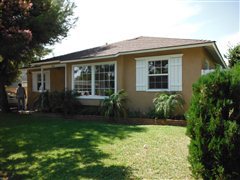
Property Inspection Report
| Client(s): | Home Buyer |
| Property address: | 1234 Perfect Street Ocean, California |
| Inspection date: | Saturday, September 22, 2012 |
This report published on Tuesday, April 29, 2014 9:39:56 AM PDT
The following written report is prepared for the sole, confidential and exclusive use of the client(s) named above. It is designed to highlight major and significant defects observed on the day of the inspection, not minor or cosmetic ones (although these will be noted when observed as a courtesy). The report is intended as a general guide to help you evaluate the home. Read your entire Home Inspection Report before purchasing the property, paying close attention to all items noted on the report and to any exclusions and limitations listed. Any items noted that require further evaluation, any items not accessible or able to be located during the inspection and any items listed under the Visual Obstructions and Exclusions section should be investigated or evaluated before you purchase the home. I recommend that any needed repairs be made by a licensed, qualified contractor.
Your Home Inspection Report represents my good-faith opinions on the subjects listed within on the day of the inspection - no guarantee or warranty is either expressed or implied. Hidden or concealed defects are not included in this report. This report is not an insurance policy. Please be sure to read the entire report thoroughly and call promptly with any questions or concerns. This report shall supersede any written or verbal communication and comments made prior to providing the written report.
Best Wishes,
Reza Limonadi AIA
Registered California Architect
Licensed General Contractor
Certified Building Inspector
Certified Mold and Asbestos Inspector
Coastal Inspections
Inspector Introduction
Reza Limonadi AIA is an InterNACHI Certified Inspector for existing and new residential & commercial buildings under ASHI or CREIA & ASTM standards, Registered State of California Architect with over 20 years of experience in the construction of commercial, industrial and residential buildings, Licensed General Building Contractor (CSLB) specializing in residential constructions and renovations, Certified Residential and Commercial Mold Inspector, Certified Asbestos Building Inspector (EPA-HUD), and Indoor Air Quality inspector.
I have over 30 years cumulative experience in general building design and construction, residential and commercial property inspections, and environmental assessments and remediation (mold, asbestos, lead, radon, and indoor air quality). In addition, I am an active member of American Institute of Architects (AIA), InterNACHI, and International Association of Certified Indoor Air Consultants.
How to Read this Report
This report is organized by the property's functional areas. Within each functional area, descriptive information is listed first and is shown in bold type. Items of concern follow descriptive information.
Concerns are shown and sorted according to these types:| Safety | Poses a risk of injury or death | |
| Major Defect | Correction likely involves a significant expense | |
| Repair/Replace | Recommend repairing or replacing | |
| Repair/Maintain | Recommend repair and/or maintenance | |
| Future improvements | Recommended correction for future improvements | |
| Maintain | Recommend ongoing maintenance | |
| Evaluate | Recommend evaluation by a specialist | |
| Monitor | Recommend monitoring in the future | |
| Serviceable | Item or component is in serviceable condition | |
| Comment | For your information |
Click here for a glossary of building construction terms.Contact your inspector If there are terms that you do not understand, or visit the glossary of construction terms at http://www.reporthost.com/glossary.asp
Table of Contents
General informationExterior
Roof
Garage
Attic
Electric service
Water heater
Heating and cooling
Plumbing and laundry
Crawl space
Kitchen
Bathrooms
Interior rooms
General information
Inspector's name: Reza Limonadi AIA
Structures inspected: Single Family Detached
Inspection Fee: $
Payment method: Check
Present during inspection: Client(s), Realtor
Occupied: No
Weather conditions: Clear
Temperature: Warm
Ground condition: Dry
Foundation type: Crawlspace
The following items are excluded from this inspection: Security system, Irrigation system, Low voltage outdoor lighting, Fire suppression system
1)
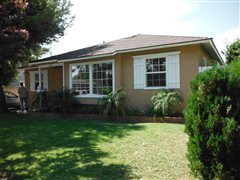 Photo 1-1 |
2)
- The Environmental Protection Association (http://www.epa.gov)
- The Consumer Products Safety Commission (http://www.cpsc.gov)
- The Center for Disease Control (http://www.cdc.gov)
Exterior
Foundation material: Poured in place concrete
Apparent wall structure: Wood frame
Wall covering: Stucco
Driveway material: Poured in place concrete
Sidewalk material: Poured in place concrete
Exterior door material: Solid core wood
3)
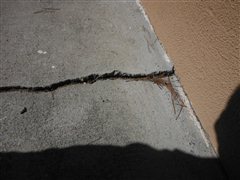 Photo 3-1 |
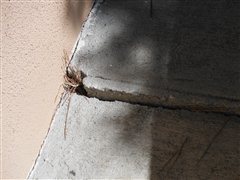 Photo 3-2 |
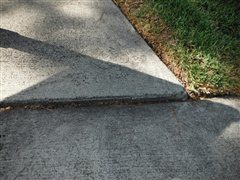 Photo 3-3 |
4)
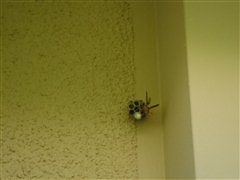 Photo 4-1 |
5)
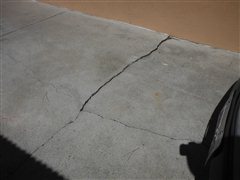 Photo 5-1 |
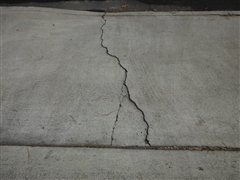 Photo 5-2 |
6)
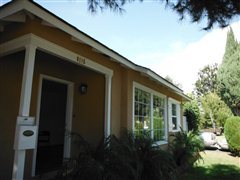 Photo 6-1 |
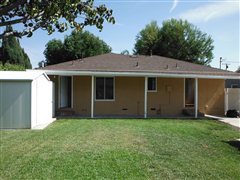 Photo 6-2 |
7)
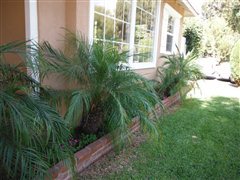 Photo 7-1 |
8)
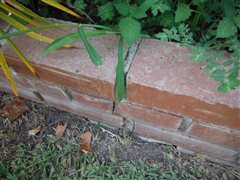 Photo 8-1 |
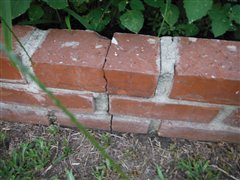 Photo 8-2 |
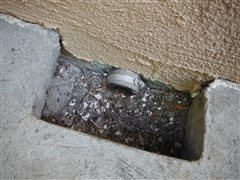 Photo 8-3 Buried clean out pipe
|
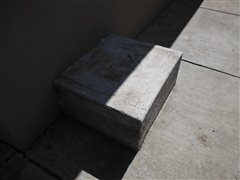 Photo 8-4 |
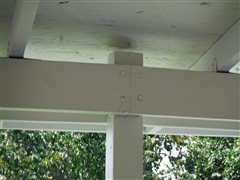 Photo 8-5 Missing metal brackets at post beam connection on the shade structure
|
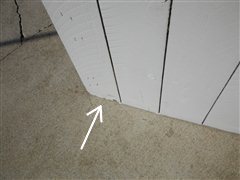 Photo 8-6 One side gate drags on the concrete driveway
|
9)
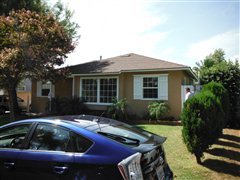 Photo 9-1 |
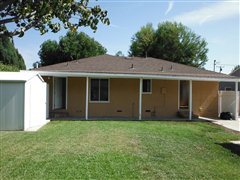 Photo 9-2 |
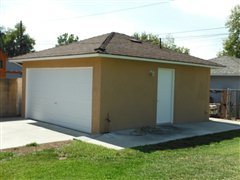 Photo 9-3 |
10)
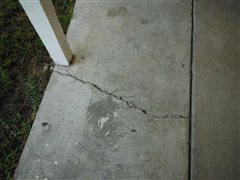 Photo 10-1 |
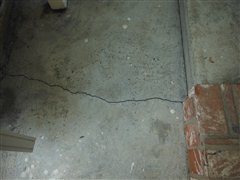 Photo 10-2 |
Roof
Roof inspection method: Traversed
Roof type: Hipped
Roof covering: Asphalt or fiberglass composition shingles
Gutter & downspout material: None
Roof ventilation: Adequate
11)
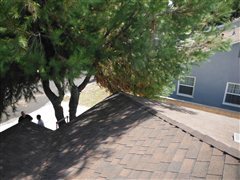 Photo 11-1 |
12)
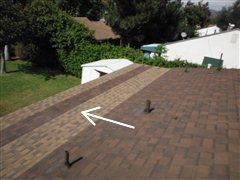 Photo 12-1 |
13)
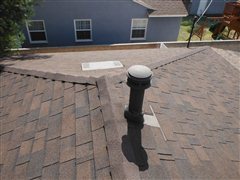 Photo 13-1 |
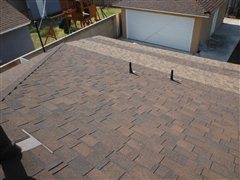 Photo 13-2 |
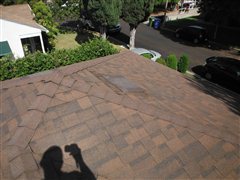 Photo 13-3 |
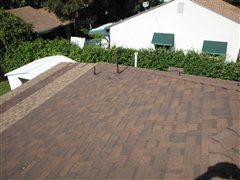 Photo 13-4 |
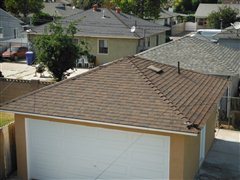 Photo 13-5 |
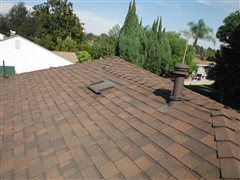 Photo 13-6 |
Garage
14)
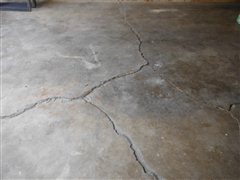 Photo 14-1 |
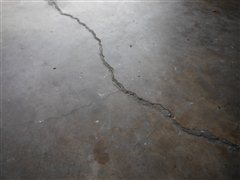 Photo 14-2 |
15)
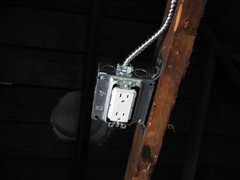 Photo 15-1 |
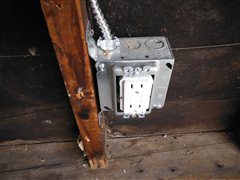 Photo 15-2 |
16)
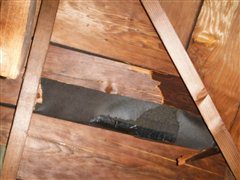 Photo 16-1 Missing roof sheathing board
|
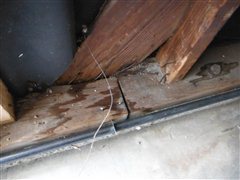 Photo 16-2 Moisture stains on sill plate
|
17)
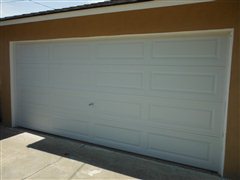 Photo 17-1 |
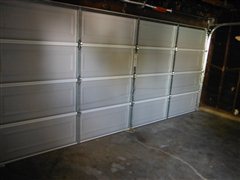 Photo 17-2 |
18)
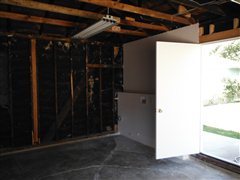 Photo 18-1 |
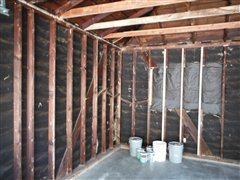 Photo 18-2 |
19)
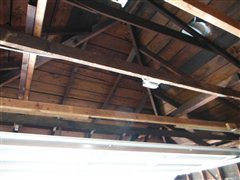 Photo 19-1 |
Attic
Inspection method: Viewed from hatch
Roof structure type: Rafters
Ceiling structure: Ceiling beams
Insulation material: Fiberglass loose fill
20)
Recommend following guidelines in the CDC's Clean Up, Trap Up, Seal Up article for eradicating rodents, cleaning up their waste and nesting materials, and preventing future infestations. While Hantavirus is believed to survive less than one week in droppings and urine, specific precautions should be taken during clean up. The client(s) may wish to consult with a qualified, licensed pest control operator for eliminating the infestation. A qualified licensed abatement contractor or industrial hygienist could be contacted for clean up. If the infestation was minimal, clean up of rodent waste and nesting materials in non-living spaces (crawl spaces and attics) may not be necessary, or may be performed for aesthetic reasons only (odor and appearance).
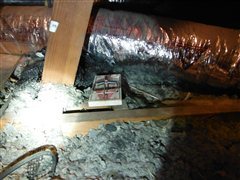 Photo 20-1 |
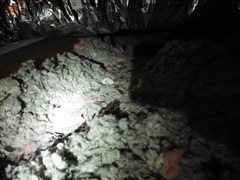 Photo 20-2 |
21)
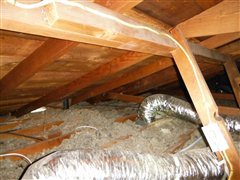 Photo 21-1 |
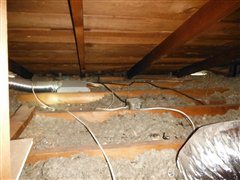 Photo 21-2 |
22)
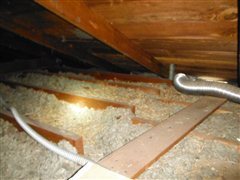 Photo 22-1 |
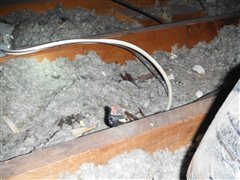 Photo 22-2 |
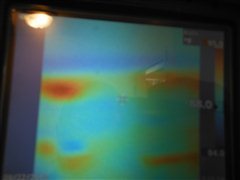 Photo 22-3 Hot spots indicate low attic insulation
|
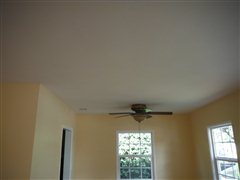 Photo 22-4 |
23)
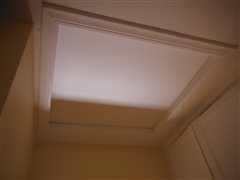 Photo 23-1 |
24)
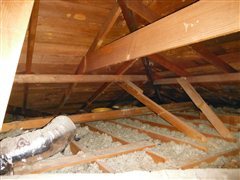 Photo 24-1 |
 Photo 24-2 |
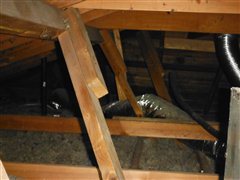 Photo 24-3 |
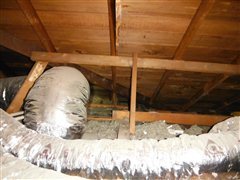 Photo 24-4 |
25)
Electric service
Primary service type: Overhead
Primary service overload protection type: Circuit breakers
Service amperage (amps): 100
Service voltage (volts): 120/240
Location of main service switch: Side Yard
Location of main disconnect: Breaker at top of main service panel
Service entrance conductor material: Copper
Main disconnect rating (amps): 100
Solid strand aluminum branch circuit wiring present: No
26)
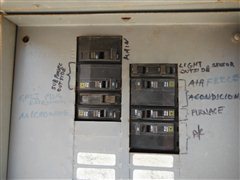 Photo 26-1 |
27)
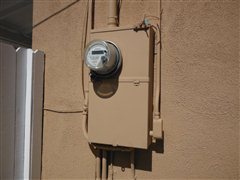 Photo 27-1 |
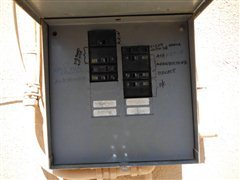 Photo 27-2 |
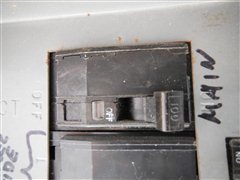 Photo 27-3 |
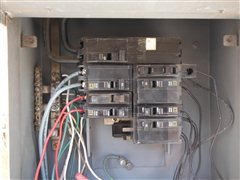 Photo 27-4 |
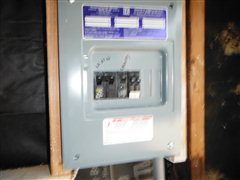 Photo 27-5 |
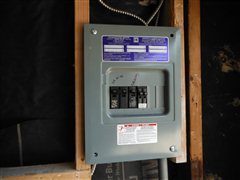 Photo 27-6 |
28)
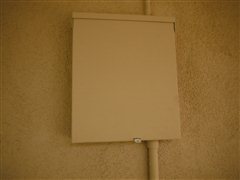 Photo 28-1 This box's cover could not be opened to visually inspect this unit
|
Water heater
Estimated age: 2008
Type: Tank
Energy source: Natural gas
Capacity (in gallons): 38
29)
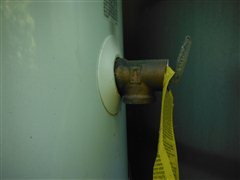 Photo 29-1 |
30)
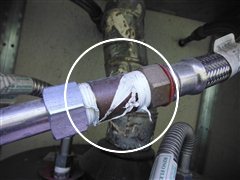 Photo 30-1 |
31)
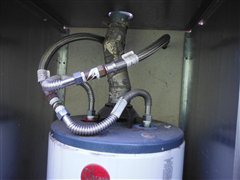 Photo 31-1 |
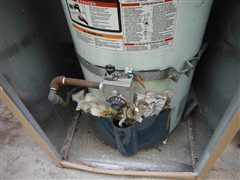 Photo 31-2 |
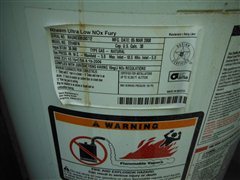 Photo 31-3 |
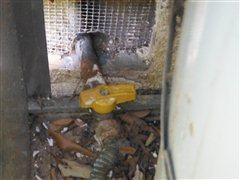 Photo 31-4 Gas was shut off to the unit when inspected
|
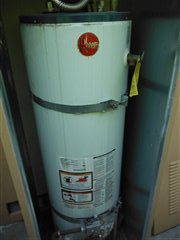 Photo 31-5 |
32)
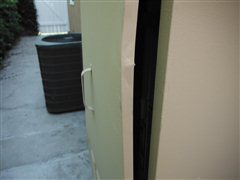 Photo 32-1 |
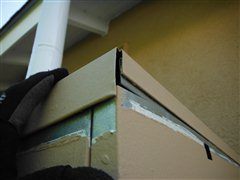 Photo 32-2 |
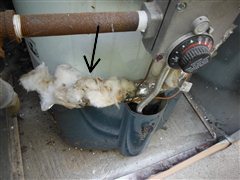 Photo 32-3 Loose insulation could be a fire hazard
|
Heating and cooling
Primary heating system energy source: Natural gas
Primary heat system type: Forced air
Primary A/C energy source: Electric
Primary Air conditioning type: Split system
Distribution system: Flexible ducts
Filter location: In return air duct below furnace
Note: Our inspection of major systems is limited to the normal operating functions of items listed. Independent evaluations including the adequacy/inadequacy of heating and cooling systems (such as cracked heat exchangers, air conditioning pressure tests, etc.) water flow (such as gallons per minute), electrical amperage/voltage adequacies are not within the scope of this report. If such detailed information is required, we suggest contacting appropriate specialists.
33)
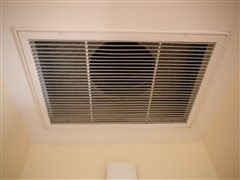 Photo 33-1 |
34)
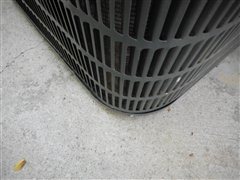 Photo 34-1 |
35)
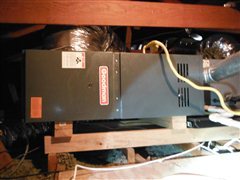 Photo 35-1 |
36)
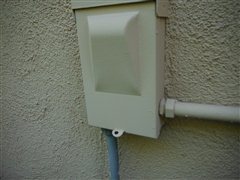 Photo 36-1 |
37)
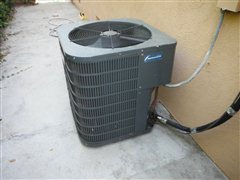 Photo 37-1 |
38) Temperatures
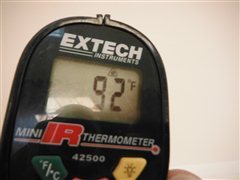 Photo 38-1 Heater did not reach 100 f in heating mode. Evaluate and service as required
|
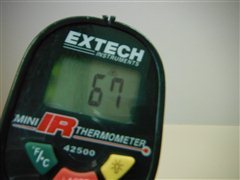 Photo 38-2 A/C reached a minimum of 15 f below ambient temperature in cooling mode
|
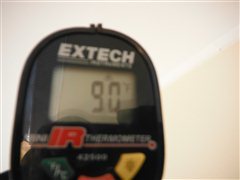 Photo 38-3 90 f ambient temperature
|
Plumbing and laundry
Water pressure (psi): 105 psi
Location of main water meter: Sidewalk
Location of main fuel shut-off: Side yard
Water service: Public
Service pipe material: Copper, Galvanized steel
Supply pipe material: Copper, Galvanized steel
Vent pipe material: Plastic, Galvanized steel
Drain pipe material: Plastic, Galvanized steel
Waste pipe material: Plastic, Galvanized steel
39)
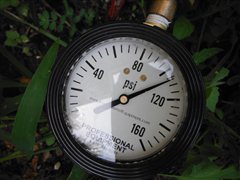 Photo 39-1 |
40)
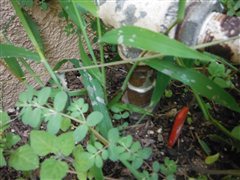 Photo 40-1 |
41)
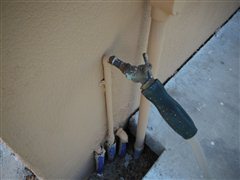 Photo 41-1 |
42)
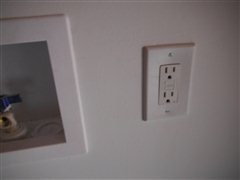 Photo 42-1 Laundry area is using a GFI outlet. Remove and exchange with a regular outlet as needed to avoid accidental tripping
|
43)
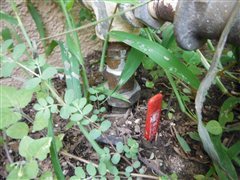 Photo 43-1 |
44)
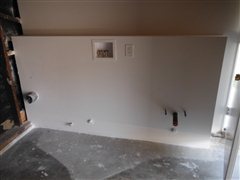 Photo 44-1 |
45)
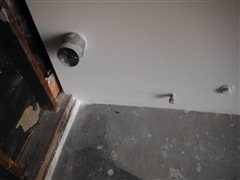 Photo 45-1 |
Crawl space
Inspection method: Viewed from hatch
Insulation material underneath floor above: None visible
Pier or support post material: Wood
Beam material: Solid wood
Floor structure above: Solid wood joists
Vapor barrier present: No
46)
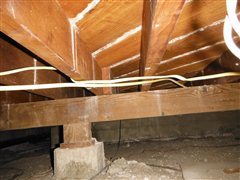 Photo 46-1 |
47)
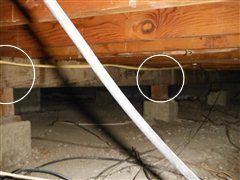 Photo 47-1 |
48)
- The soil below the vapor barrier should be smooth and free from sharp objects.
- Seams should overlap a minimum of 12 inches.
- The vapor barrier should lap up onto the foundation side walls.
- Seams and protrusions should be sealed with a pressure sensitive tape.
- The vapor barrier should be caulked and attached tightly to the foundation side walls. For example, with furring strips and masonry nails.
Better building practices require that:
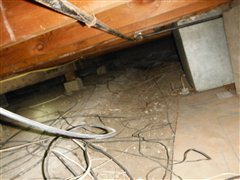 Photo 48-1 |
49)
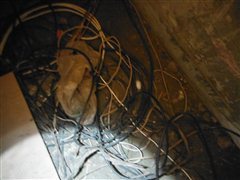 Photo 49-1 |
 Photo 49-2 |
50)
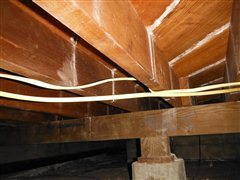 Photo 50-1 |
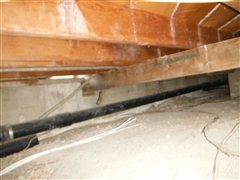 Photo 50-2 |
51) Crawlspace was viewed from the access hatch. Areas beyond the inspectors visual range in the crawlspace are not covered in this report. Intent of this inspection is to get a sense of the house's structural make-up and stability. This inspection is not a complete crawlspace inspection and in the case that a complete visual inspection is necessary, your inspector will inform you.
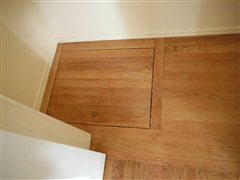 Photo 51-1 |
Kitchen
Note: Inspection of kitchen components is limited to built-in gas or electric appliances and plumbing systems, if power is supplied. These items are tested under normal operating conditions. Extensive evaluations, such as calibration of timers, heat settings and temperature probes on cooking appliances are not within the scope of this report. Note: Due to the inaccessibility of the dishwasher components, we can do no more than operate under normal operating procedures. Dishwashers can fail at any time due to their complexity. Our review is to determine if the system is free of leaks and excessive corrosion. Shutoff valves and angle stops under kitchen or bathroom sinks and toilets are not turned or tested during the inspection due to the possibility of leaking. We suggest all shutoff valves or angle stops be turned regularly to ensure free movement in case of emergency.
52)
Grounding type receptacles were first required in residential structures during the 1960s. Based on the age of this structure and/or the absence of 2-pronged receptacles, repairs should be made by correcting wiring circuits as necessary so all receptacles are grounded as per standard building practices. Replacement of three-pronged receptacles with 2-pronged receptacles is not an acceptable solution.
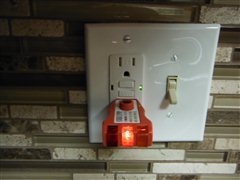 Photo 52-1 |
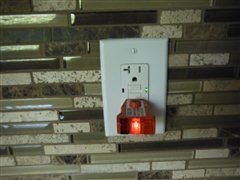 Photo 52-2 |
53)
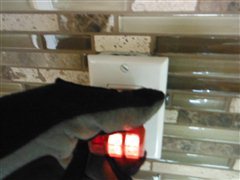 Photo 53-1 |
54)
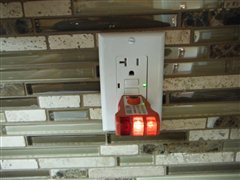 Photo 54-1 |
55)
http://www.google.com/search?q=range+anti+tip+device
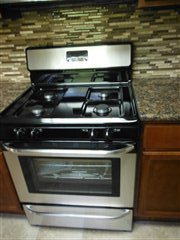 Photo 55-1 |
56)
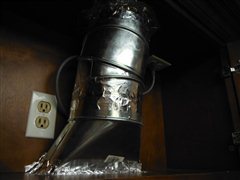 Photo 56-1 |
57)
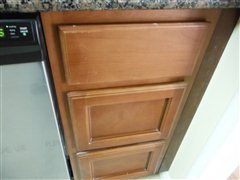 Photo 57-1 |
58)
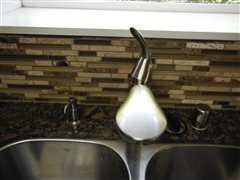 Photo 58-1 |
59)
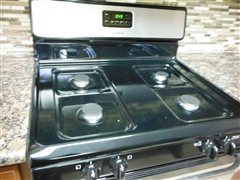 Photo 59-1 |
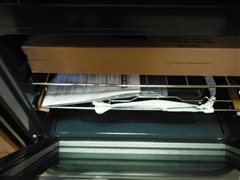 Photo 59-2 |
60)
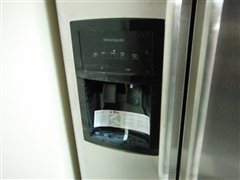 Photo 60-1 Ice / water dispenser did not get evaluated
|
61)
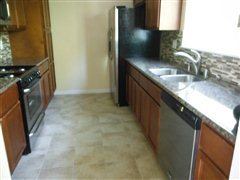 Photo 61-1 |
Bathrooms
62)
Grounding type receptacles were first required in residential structures during the 1960s. Based on the age of this structure and/or the absence of 2-pronged receptacles, repairs should be made by correcting wiring circuits as necessary so all receptacles are grounded as per standard building practices. Replacement of three-pronged receptacles with 2-pronged receptacles is not an acceptable solution.
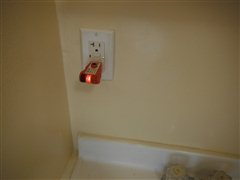 Photo 62-1 |
63)
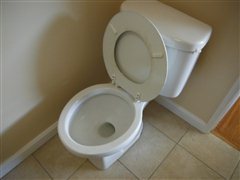 Photo 63-1 |
64)
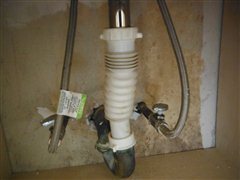 Photo 64-1 |
65)
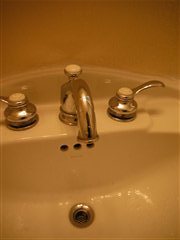 Photo 65-1 |
66)
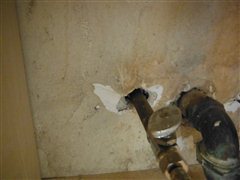 Photo 66-1 |
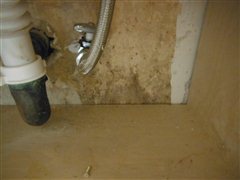 Photo 66-2 |
67)
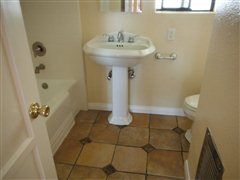 Photo 67-1 |
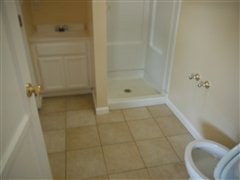 Photo 67-2 |
68) One or more bathroom sink drains has an active leak. For example, at pipe fittings and/or junctions between pipe and sink. A qualified plumber should evaluate and repair as necessary.
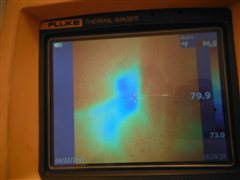 Photo 68-1 |
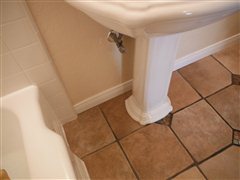 Photo 68-2 |
Interior rooms
69)
Grounding type receptacles were first required in residential structures during the 1960s. Based on the age of this structure and/or the absence of 2-pronged receptacles, repairs should be made by correcting wiring circuits as necessary so all receptacles are grounded as per standard building practices. Replacement of three-pronged receptacles with 2-pronged receptacles is not an acceptable solution.
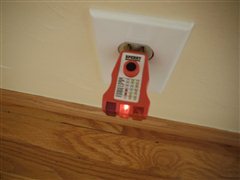 Photo 69-1 |
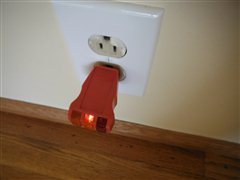 Photo 69-2 |
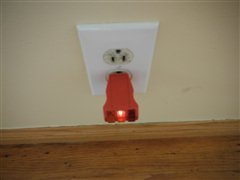 Photo 69-3 |
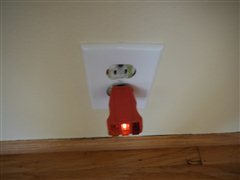 Photo 69-4 |
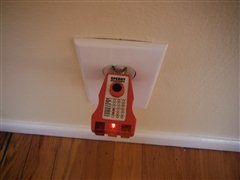 Photo 69-5 |
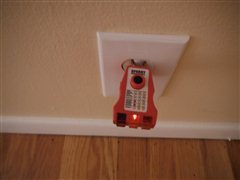 Photo 69-6 |
70)
- Computer hardware
- Refrigerators
- Freezers
- Air conditioners
- Clothes washers
- Clothes dryers
- Dishwashers
- Kitchen food waste disposers
- Information technology equipment
- Sump pumps
- Electrical aquarium equipment
- Hand-held motor-operated tools
- Stationary and fixed motor-operated tools
- Light industrial motor-operated tools
- Hedge clippers
- Lawn mowers
This list is not exhaustive. A qualified electrician should evaluate and install additional receptacles and grounded receptacles as per the client(s)' needs and standard building practices.
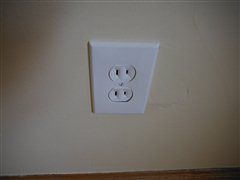 Photo 70-1 |
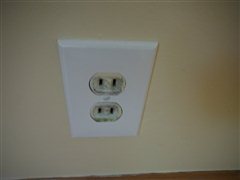 Photo 70-2 |
71)
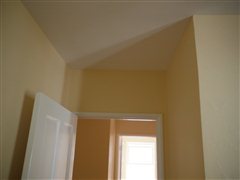 Photo 71-1 |
72)
- Any gas appliances such as a gas stove, gas furnace, gas fireplace, gas water heater, etc.
- A fireplace (even if it only burns wood, pellets, or any other material).
- An attached garage (even if there are no gas appliances in the house!). Cars continue to emit CO even after they are shut off.
- ANY rental dwelling that meets the criteria listed above.
As of January 1, 2013, ALL multi-family dwellings including multi-family dwellings that meet the criteria listed above will be required to have Carbon Monoxide detectors.
The International Association of Fire Chiefs recommend a carbon monoxide detector on every floor of your home, including the basement. A detector should be located within 10 feet of each bedroom door and there should be one near or over any attached garage. Each detector should be replaced every five to six years.
Proper placement of a carbon monoxide (CO) detector is important. If you are installing only one carbon monoxide detector, the Consumer Product Safety Commission (CPSC) recommends it be located near the sleeping area, where it can wake you if you are asleep. Additional detectors on every level and in every bedroom of a home provides extra protection against carbon monoxide poisoning.
Homeowners should remember not to install carbon monoxide detectors directly above or beside fuel-burning appliances, as appliances may emit a small amount of carbon monoxide upon start-up. A detector should not be placed within fifteen feet of heating or cooking appliances or in or near very humid areas such as bathrooms.
73)
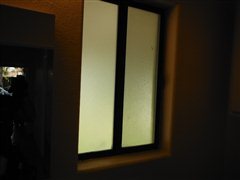 Photo 73-1 |
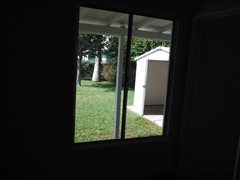 Photo 73-2 |
74)
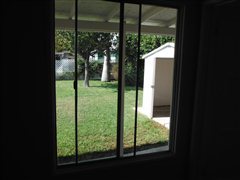 Photo 74-1 |
75)
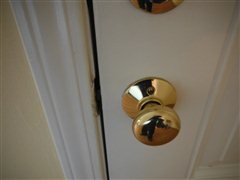 Photo 75-1 |
76)
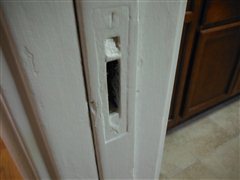 Photo 76-1 Missing one pocket door pull
|
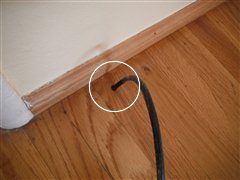 Photo 76-2 |
77)
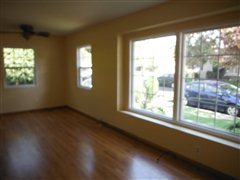 Photo 77-1 |
This inspection meets or exceeds the Standards of Practice for the InterNational Association of Certified Home Inspectors (NACHI). It is intended as a general guide to help you make an evaluation as to the overall condition of the home. It is not intended to place a value on the home nor make any representation as to the advisability of purchase. It is not a guarantee or warranty. It is not an insurance policy.
The report reflects the opinion of the inspector(s), based upon visual impressions of conditions that existed at the time of inspection. The inspection is not intended to be technically exhaustive or to imply that every component in the home was inspected. No disassembly of equipment, opening of walls, moving of furniture or stored items was performed or is allowed by state requirements. All components which were concealed or obscured from observation at the time of inspection (including those concealed by clutter and stored items) are necessarily excluded from the report. Unless noted otherwise the house exterior was inspected from the ground. Only a representative sampling of parts and components (windows, electrical outlets, roof shingles, exterior wall trim and cladding, etc.) were examined and are within the scope of this inspection. Unless noted otherwise roofs and roofing materials are inspected from the ground with binoculars, from the roof edge when possible or from windows overlooking the roof.
Environmental hazards are not within the scope of the inspection and are excluded from the report. Any hazards noticed while performing the building inspection will be listed in the "Possible Environmental Hazards" section for your convenience so you can have them further investigated by an expert. These hazards include but are not limited to radon gas, carbon monoxide, lead and lead paint, buried storage tanks, asbestos, vermiculite, urea formaldehyde, and mold. Also excluded from the report are heating system heat exchangers, pools, hot tubs, spas, fountains, exterior lighting, water wells, zoning ordinances, intercoms, playground equipment, sports courts, elevators, outbuildings, septic tanks and sewage systems, water treatment equipment, security systems, sprinkler systems (both fire and lawn), bridges (over culverts, streams, ponds, etc.), generators, greenhouses, and central vacuum systems. Condo common areas are excluded. This is not an inspection for insects (including wood destroying), rodents birds, or other infestations. Reinspections or additional testing is not included and will incur an additional fee if needed. No warranty or guaranty of the home or components is implied by Coastal Home Inspections.
This inspection report is not a compliance inspection for any government codes or regulations, nor as a property or land survey. The types of water supply (public supply or private well) and waste disposal (public sewer or private septic system) cannot be accurately determined by a home inspection and were not part of your home examination. I recommend you check with your local City or other source of building records / permits to verify your type of system before purchase.
